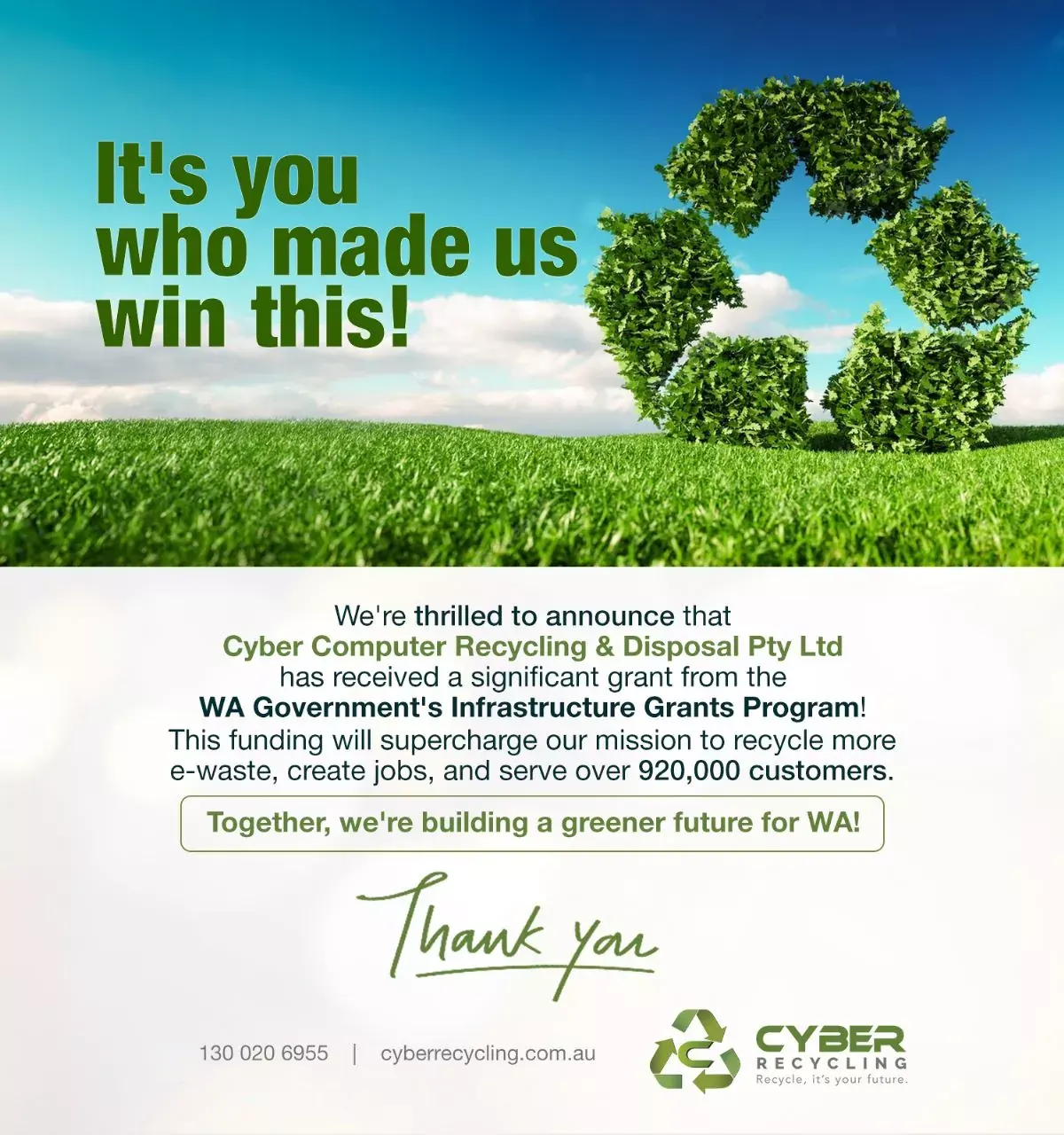Western Australia has embraced solar power with thousands of rooftops and large-scale installations harnessing the abundant sunlight. While solar panels provide clean energy and lower carbon emissions, they also create a growing waste stream at the end of life. With most PV modules lasting 25–30 years, the first generations of WA’s solar panels are now approaching replacement. The environmental impact of this solar panel disposal is emerging as a concern. Let’s examine how much solar waste WA faces, its hazards, and the recycling and policy measures being developed.
Solar PV Growth and Waste Forecast
Solar energy adoption in WA has surged. As of 2023, about 483,885 rooftop solar units have been installed across the state. Nearly 40% of WA dwellings now have solar, generating over 2812 MW of clean electricity. This rapid uptake means a large volume of panels will reach the end of life in the coming decades. Globally, solar PV capacity is also rising; Australia alone has over 3 million rooftop systems.
Projected Waste Volumes in WA and Australia
The inevitable result is mounting solar waste. In WA, experts estimate that by 2035, more than 100,000 tonnes of end-of-life modules could be sent to landfill. Nationally, projections are even larger, with the cumulative volume of spent panels in Australia expected to reach roughly 685,000 tonnes by 2030 and 1.157 million tonnes by 2035. On an annual basis, solar waste in Australia is forecast to exceed 50,000 tonnes per year by 2025, potentially doubling to 100,000 tonnes per year by 2030–2035. These waste volumes are equivalent to removing the solar panels on hundreds of thousands of homes each year.
These projections reflect the long lifespan of panels but also the large installed base. With average lives of 25–30 years, the first waves of WA’s early-adopter panels are now nearing retirement. Unless managed proactively, discarded panels could overwhelm traditional waste systems.
Environmental Hazards of Solar Waste
Solar panels contain valuable materials, with around 95% of a panel being technically recyclable. But they also include potentially hazardous substances. Most modern panels have aluminum frames and silica glass, while the photovoltaic cells and wiring may contain metals like lead, cadmium, silver, copper, and others. These metals are normally bound in the panel structure, but when panels break or are buried, they can leach into the environment.
Toxic Materials and Pollution Risk
If panels end up in a landfill, heavy metals can pose a pollution threat. Laboratory tests show that cadmium, lead, and other toxins in some panels may be hazardous waste under disposal rules. In practice, leachate from broken or crushed PV glass can release metals into soil and groundwater. International studies warn that solar waste dumped indiscriminately could lead to contamination of ecosystems. Meaning improper solar waste disposal risks soil and water pollution, adding an environmental burden to this renewable technology.
Beyond toxins, large volumes of discarded panels create landfill pressure. Panels are bulky and durable; a ton of panels can take up significant space in a landfill. Each ton of recycled panels also represents substantial embodied energy and carbon that can be avoided if materials are recovered. Recycling one tonne of panels can prevent up to 1.2 tonnes of CO2-equivalent emissions compared to landfilling. Conversely, landfilling solar waste means forgoing these emissions savings as well as wasting resources.
Resource Loss and Carbon Footprint
Each end-of-life panel still contains valuable metals. For example, a typical 20 kg silicon panel holds over $22 worth of materials. Across all of Australia’s pending waste, this translates into roughly $1 billion in recoverable material value by 2035. If not recycled, those metals must be mined anew, incurring further energy and carbon costs. Recycling panels conserves these critical materials and reduces the carbon footprint of PV power. Indeed, experts note that solar recycling avoids global warming potential and ecotoxicity impacts while saving water and energy.
Solar waste has a complex environmental impact, ranging from material loss and greenhouse emissions if recycled inadequately and pollution risks if disposed of improperly. Effective e waste management is needed to mitigate these issues.
Solar Panel Disposal and Recycling in WA
Currently in WA, most decommissioned or broken solar panels are simply landfilled or stockpiled. There is no dedicated statewide take-back program for PV modules. Unlike batteries or appliances, solar panels are not yet covered under the WA e-waste ban, so businesses and homeowners often treat them as general waste. Some industry and recyclers, including Cyber Recycling, will accept old panels, but nationwide, only about 17% of panel components are currently recycled.
Recycling Technologies and Approaches
Recycling a solar panel involves separating its materials. The most mature method is mechanical recycling, in which panels are crushed and shredded to recover bulk materials like glass, aluminum, and wiring. Existing glass and metal recyclers can then process these fractions. More advanced processes use chemicals or heat to delaminate the silicon cells and extract silver, silicon, or indium.
In general, solar recycling is feasible, and around 95% of panel mass can be reclaimed, but specialized facilities are needed to handle the complex mix.
Australia is just beginning to develop those facilities. In 2024, Queensland opened the first dedicated solar PV recycling plant, with capacity for 240,000 panels per year. Still, many panels remain unprocessed. Cost is a key barrier as transporting and recycling panels run about $500–$1,000 per tonne.
To encourage recycling, industry and government are exploring solutions. Researchers in Australia are testing eco-friendly chemical processes to recover silicon and other cell components. In WA, the concept of a circular economy is promoted, where old panels are reused or recycled into new products. There is also growing interest in solar module recycling programs, which focus on reclaiming photovoltaic modules as a whole at end-of-life.
Disposal Practices and Waste Management
At present, solar panels in WA often enter the conventional waste stream. Households and small businesses are not legally required to return panels for recycling. Some councils and hardware stores may accept old panels for proper disposal, but availability is sporadic. The WA government encourages take-back via community drop-off centers, but panels are not yet part of the official e-waste categories.
Consequently, many decommissioned panels end up in general garbage or landfill sites that were never designed for electronic waste. This reality highlights a gap in ewaste recycling for solar PV. Without a dedicated program or regulation, WA’s solar waste risks being mishandled despite its recyclable content. Industry bodies emphasize that even 80–90% of panels taken down are still functional and could be repurposed or resold.
Policies and Initiatives for Solar Waste
Australian and WA authorities are now moving to address solar waste more proactively. The federal government has proposed extending product stewardship to include PV systems, making manufacturers responsible for end-of-life panels. A recent consultation paper advocates adding solar panels to Australia’s national e-waste recycling scheme, with targets for solar panel recycling Australia-wide by mid-decade.
WA’s E-Waste Regulations
In WA specifically, a state-wide e-waste landfill ban began on 1 July 2024. This ban prohibits businesses and recycling operators from dumping certain electronics. However, notably, solar panels were notably excluded in Phase 1. WA is also investing over $10 million in grants to boost e-waste collection and recycling infrastructure. Once solar PV is formally added, these resources could help build the local solar panel recycling capacity needed.
A Circular Future for Solar Panels
There is a strong case that solar waste should be viewed as a resource. The materials in aged panels can feed new industries. Even whole decommissioned panels can be refurbished or repurposed. WA’s future circular economy may well see old panels integrated into roads or new solar products, as some projects are piloting.
Overall, the emerging policies reflect a shift, indicating that solar panels will no longer be treated like ordinary rubbish. By coordinating e waste management strategies and investing in ewaste recycling infrastructure, WA aims to turn the challenge of solar waste into an opportunity. The result will be reduced environmental impact and a more sustainable solar industry.
Cyber Recycling’s Commercial Solar Services
Cyber Recycling runs a dedicated commercial solar recycling service that focuses on getting useful value from retired PV systems rather than sending modules to landfill. Our team can replace damaged cells on site and bring faulty panels back to a recycling plant where glass, aluminium, and silicon are separated and recovered as part of broader solar panel recycling work.
We handle whole systems, not just panels. Inverters, batteries, and other electronics are processed through their e-waste recycling services, so hazardous or combustible components are managed safely as part of a complete solar panel disposal solution.
We also offer free pickup in Perth and have locations in Darwin and Adelaide, with pricing options for other regions. For organisations that need a straightforward path from decommissioning to recycling, our commercial solar offering simplifies logistics and connects decommissioned modules into the recycling stream.
Conclusion
Solar power has delivered tremendous environmental benefits for Western Australia, but it also brings a new wave of waste at the end of life. Without intervention, thousands of tonnes of panels could fill landfills in the next decade. Fortunately, awareness of the issue is growing. WA is rolling out e-waste bans and funding, while national schemes and industry collaborations are laying the groundwork for robust solar panel recycling.
Turning solar waste into reusable material will require careful solar panel disposal planning, investment in recycling facilities, and strong regulations. By treating old panels as recyclable assets, rather than toxic trash, WA can minimise ecological harm and maximise resource recovery. The key will be a circular approach that involves refurbishing, recycling, and reusing solar modules whenever possible, protecting both the economy and the environment.


